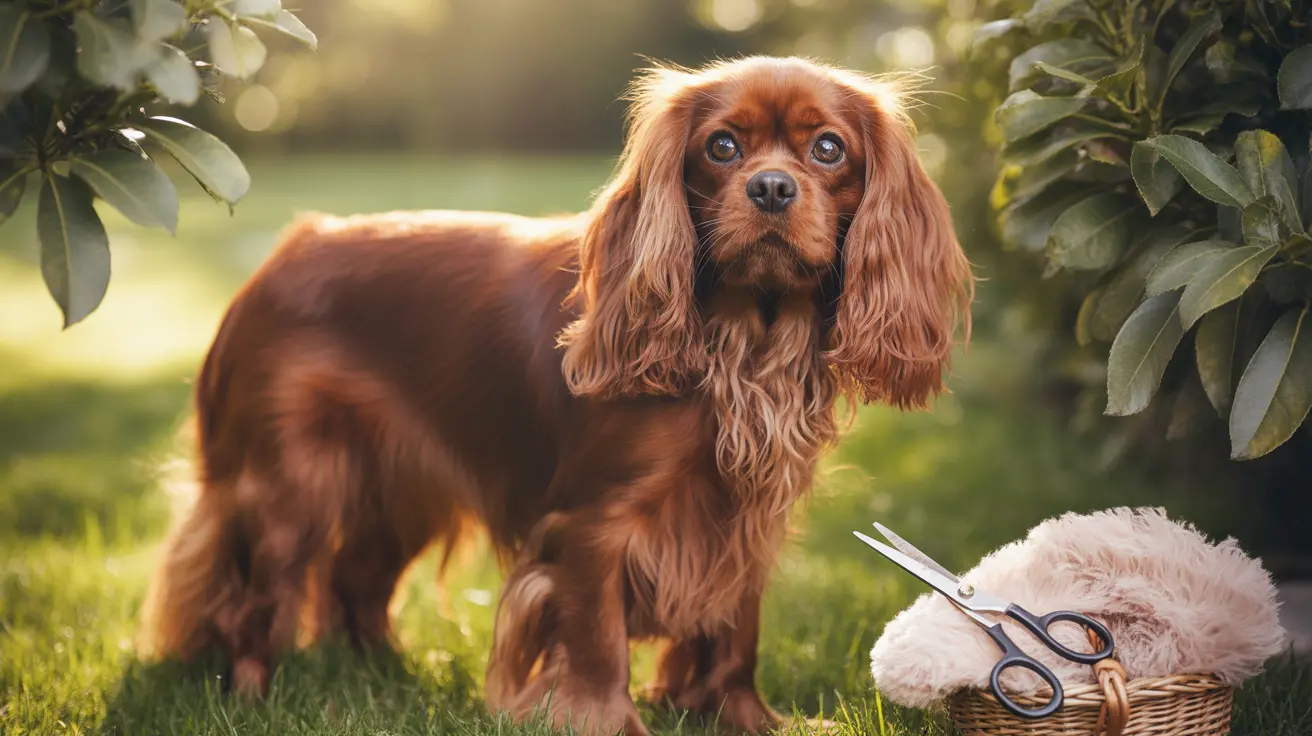Understanding Brown Cavalier Color Variations
Brown appears in several officially recognized Cavalier color patterns, each with its own distinct characteristics:
The Ruby Cavalier showcases a solid, deep reddish-brown coat without any white markings. This rich, uniform color is highly prized and relatively rare among the breed's color variations.
Blenheim Cavaliers feature a white base coat with warm chestnut-brown markings. The famous "Blenheim Kiss" - a brown spot on the forehead - is particularly valued in this variety.
Genetics Behind Brown Coloration
The brown coloring in Cavaliers results from specific genetic combinations affecting melanin production. Ruby Cavaliers inherit genes for solid red-brown coloring, while Blenheim patterns come from a combination of white-spotting and brown-producing genes.
Color intensity can vary as puppies mature, with Ruby coats often deepening to a richer brown shade over time.
Caring for Your Brown Cavalier's Coat
Maintaining the lustrous appearance of a brown Cavalier requires dedicated grooming:
- Brush thoroughly 3-4 times weekly to prevent matting
- Use quality dog shampoos that won't fade the brown coloring
- Regular ear cleaning to prevent infections
- Trim between paw pads as needed
Health Considerations
While coat color doesn't directly affect health, all Cavaliers require attention to certain breed-specific concerns:
- Regular heart checkups for mitral valve disease
- Monitoring for syringomyelia
- Routine eye examinations
- Dental care to prevent periodontal disease
Temperament and Personality
Brown Cavaliers, like all colors of the breed, are known for their gentle, affectionate nature. They excel as companion dogs and adapt well to various living situations, from apartments to large homes.
Frequently Asked Questions
What are the differences between the brown shades in Blenheim and Ruby Cavalier King Charles Spaniels?
Ruby Cavaliers display a solid, rich mahogany-brown coat throughout, while Blenheim Cavaliers show chestnut-brown markings on a white base. The Ruby's brown is typically deeper and more uniform, while Blenheim's brown appears in distinct patches and can vary in intensity.
How often should I groom and brush my brown Cavalier King Charles Spaniel's silky coat?
Brown Cavaliers should be brushed 3-4 times per week to maintain coat health and prevent matting. Full grooming sessions, including bathing, should occur every 4-6 weeks, depending on the dog's activity level and coat condition.
What is the significance of the "Blenheim Kiss" marking in brown and white Cavaliers?
The Blenheim Kiss is a chestnut-brown spot on the forehead of Blenheim Cavaliers, named after Blenheim Palace. This marking is highly prized and traditionally considered a sign of good fortune, dating back to the breed's development by the Duke of Marlborough.
Are Ruby Cavaliers with solid brown coats more prone to specific health or grooming issues?
Ruby Cavaliers aren't more prone to specific health issues than other color varieties. However, their solid-colored coats may show dirt and debris more readily, requiring consistent grooming to maintain their lustrous appearance.
How can I prevent ear infections in Cavalier King Charles Spaniels with long, floppy ears?
Prevent ear infections by cleaning ears weekly with a veterinarian-approved solution, keeping the ear area dry after baths or swimming, and regularly checking for signs of infection such as odor or redness. Regular grooming around the ears helps maintain proper airflow.






